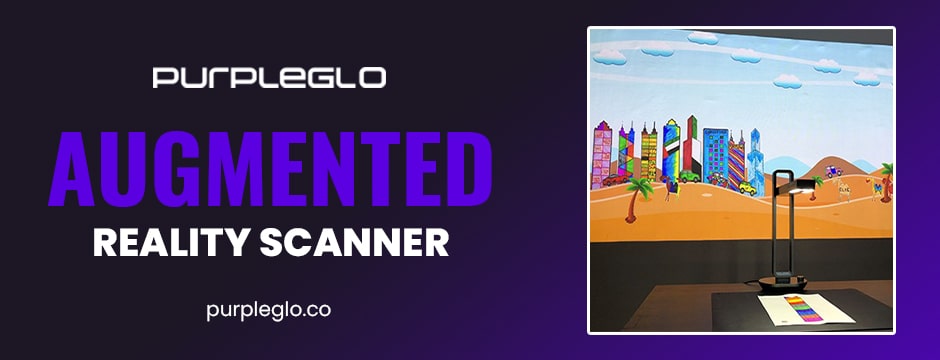The Magic of an Augmented Reality Scanner in Education

Technology has transformed the learning process. Classrooms are no longer filled with books and chalkboards. Today, students can learn new things through interactive tools. One of the most fascinating tools today in education is the augmented reality scanner. This tool makes learning real-like with features that were unimaginable just a few years ago.
An augmented reality scanner takes the physical world and combines it with digital data. It has the potential to turn an ordinary object or image into an interactive 3D environment. Students utilize a premarked image or object and hold up a device such as a tablet or smartphone. The scanner casts a virtual overlay that appears to be present in the actual world. With it, there is the feeling of awe that occurs in the classroom.
Making Learning Enjoyable
Learning can be boring sometimes. Students may find it difficult to focus on textbooks or classes. That is where an augmented reality scanner is needed. It makes lessons fun and engaging. For example, when studying biology, students can scan the image of the human heart. They will then see a 3D model that shows the flow of the blood through the chambers. This makes complex concepts so much easier to understand.
Science and math also become more interesting with augmented reality. They can visualize shapes, graphs, and chemical reactions in 3D. They can turn objects around and look at them from every possible angle. This active learning makes students remember what they have learned.
Increasing Visual Learning
Some students are visually, not reading, learners. A scanner for augmented reality is a visual learning aid. Pictures, movies, and animations are overlaid on real objects. For example, history students can scan images of ancient artifacts. The scanner superimposes additional information, such as how the artifact was used. Students can see the artifact as originally found and in its original form.
Even a principle becomes real. Physics lessons on light and optics can be supplemented with hands-on experiments in mirror reflection. The students can see light bounce off surfaces and change directions. This hands-on learning is far more effective than diagrammed textbooks.
Fostering Discovery
One of the greatest perks of an augmented reality scanner is that it encourages exploration. Students can learn at their own pace with objects and images. They can go places that they might not get to go otherwise. For example, students can scan a map and see 3D landscapes. They can explore mountains, rivers, and cities without leaving the classroom.
This type of learning induces curiosity. Learners can inquire and quickly get answers. They can try to see results in real time. Augmented reality enables them to experiment and learn freely.
Supporting Special Needs Students
Augmented reality also favours children with special needs. Learning disabled students and visual learners benefit from interactive tools. An augmented reality scanner can provide information in more than one format. It can provide animations, audio cues, or text instructions. This provides greater accessibility and ease of learning.
Augmented reality is beneficial for poor readers. They can read images or text and have someone read it aloud to them. They understand and remember better. Teachers may utilize such devices in order to include all of their students in the classroom.
Collaboration and Group Work
The use of an augmented reality scanner also fosters collaboration. Students can study projects together. They can scan objects and exchange observations on what they observe. This fosters communication and collaboration skills. For example, a group project in biology may involve scanning a virtual ecosystem. Students are able to identify plants and animals, and understand how they interact.
Augmented reality makes group work more interesting. Learners learn from findings and educate each other. They are active learners in the process, unlike being passive receivers of information. It enhances their social critical thinking skills.
Preparing for the Future
Technology is an integral part of today's world. Learning to operate devices such as an augmented reality scanner lays the groundwork for the future. It instills digital literacy and problem-solving abilities. Students are taught ways to interface with technology in innovative ways. Such skills will be beneficial for science, technology, engineering, and arts professions.
Augmented reality also inspires innovation. Students are able to create their own AR projects. They can construct 3D models, animations, or interactive stories. It encourages creativity and technical competence. With the implementation of augmented reality in education, schools prepare students for a rapidly changing world.
Making Lessons Memorable
It is probably the most powerful effect of an augmented reality scanner that learning becomes memorable. Students remember experiences rather than memorize from a textbook. When students interact with 3D models or animations, the lesson sticks in their minds.
For example, one can quickly scan a map and imagine battles of the past in an attempt to make history real. Students understand what occurred step by step and what impact those battles had. Lessons are made into stories rather than memorized facts. Students retain knowledge for longer.
Cost and Accessibility
The majority of people think that augmented reality utilities are expensive. While some utilities can be very costly, there are cheap alternatives. Most software is run on smartphones and tablets that schools already have. Some augmented reality scanners are free or low-cost.
Schools may begin small, employing AR for one subject or lesson. With time, they may build up as more students and teachers embrace the technology. Even limited usage can make a significant difference in student learning and engagement.
Conclusion
The augmented reality scanner is changing the way we educate students. It makes learning interactive, visual, and fun. It encourages exploration and has space for students with varying learning capacities. Students can work together, experiment freely, and acquire digital skills.
Lessons are engaging and memorable. Students understand complex concepts at a simpler level. Even abstract principles like mirror reflections can be found interactively. Augmented reality prepares students for the future and sparks creativity.
Schools that adopt augmented reality technology give their students an unparalleled advantage. The magic of an augmented reality scanner is that it turns boring lessons into a magical experience. Learning is no longer limited to textbooks. It becomes a delightful journey of discovery.
At PurpleGlo, we bring learning to life with our innovative augmented reality scanner. Our goal is to make education interactive, fun, and unforgettable for every student.


